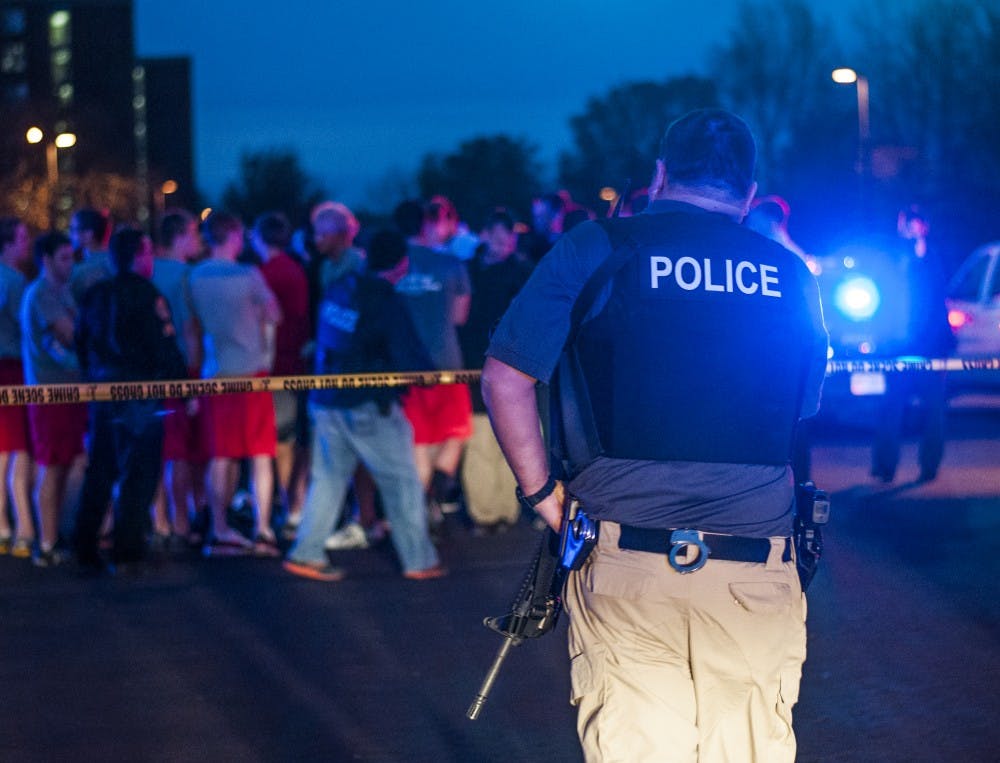Ball State has an emergency plan in the event of a mass shooting, like the one that ended with numerous casualties at an Oregon school Thursday.
The plan starts with an emergency notification, sent in the form of an email or text, to the whole campus, said University Police Chief Jim Duckham.
“We would evaluate what we would need to do as the event unfolded, whether that be bringing additional resources, such as EMS or other police agencies,” Duckham said.
But every situation would be on a case-by-case basis, and UPD would have to respond accordingly, Duckham said.
On Thursday at Umpqua Community College in Roseburg, Ore., a gunman killed at least 12 people and injured at least 20 others, according to The Associated Press. The college only had one officer on shift and no formal security staff.
In November 2013, the university’s emergency preparedness plan was put to the test after a report of a gun in the Jo Ann Gora Student Recreation and Wellness Center. The surrounding areas were put on lockdown, and students were kept updated by texts, tweets and emails.
During the lockdown, an Eaton Police Department officer accidentally fired his assault rifle, panicking some bystanders, but causing no injury when the bullet went into the street.
That was before Duckham's time. However, he said the crisis management plan is updated when it’s needed, but he didn’t know when it was last comprehensively updated.
“We meet regularly to look through and evaluate changes that need to be made,” Duckham said.
Over the summer, UPD did a multi-agency training session to prepare for emergency situations, such as an active shooter on campus. They worked with the Delaware County Sheriffs Department, EMS, Muncie Police Department and other nearby institutions to make sure communication was effective.
They also hold smaller training sessions. Last month, they trained with EMS on how to load stretchers and assist on calls.
“We’re constantly training to keep our skills fresh, evaluating the needs of our community so we can respond to any critical situation on campus,” Duckham said. “If it was a large scale incident where we needed to clear a lot of buildings or area, we’d need outside agencies to assist us, and that’s why we do training with them.”
Duckham said he and other police departments are able to learn from every shooting tragedy.
“I think we’re fortunate that we share information,” he said. “University police departments are on a Listserv where we share and get updates and such. Whether it be about how to stage better, how to work better together, communication things that need to be improved on, I think any situation, you have to take it and learn from it.”
Kendra Rauner, a senior meteorology major, said she wouldn’t know what to do in the event of an active shooter on campus.
“You never really think about it until you see it,” Rauner said. “It’s so far away, and you’re just like, ‘Oh it’s not going to happen.’ But it could happen.”
Rauner said in the case of the 2013 gun scare, the university’s response wasn’t great, and they were too slow in texting out updates to students.
“[They need to] either find another way of how they can alert us, in a quicker response, or maybe they just need to get a new way of how they text us, because I always get it like two hours late, so it never gets to me on time,” she said.
She thinks sending an email doesn’t do much, because people won't read it or will delete it immediately.
“I don’t know how they should do it. I don’t even know how I would go about it, but it’s something that probably we should learn more about since it’s common,” Rauner said.
Rose Skelly contributed to this story.





